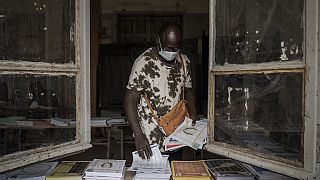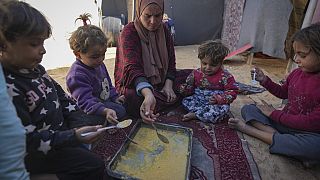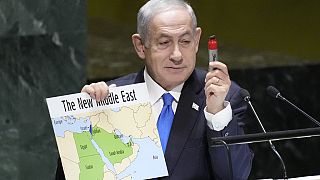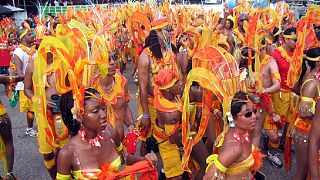Trinidad and Tobago
In a small auditorium in the seaside capital of Trinidad and Tobago, Christopher Columbus and other colonial-era figures came under scrutiny late Wednesday in a lengthy debate punctuated by snickers, applause, and outbursts.
The government had asked residents of the diverse twin-island nation in the eastern Caribbean if they wanted the removal of statues, signs, and monuments with colonial ties.
One by one, people of African, European, and Indigenous descent stepped up to the microphone and responded.
Some suggested that a prominent Columbus statue be placed in a museum.
Others requested it be destroyed and that people be allowed to stomp on the dusty remains.
One man encouraged officials to round up statues of colonial figures and create a ‘square of the infamous.’
The majority of the more than two dozen people who spoke, and dozens of others commenting online, supported the removal of colonial-era symbols and names.
“It’s an issue about how after 62 years of independence..we continue to live in a space that reflects the ideals and the vision and the views of those who were our colonial masters,” said Zakiya Uzoma-Wadada, executive chair of the islands’ Emancipation Support Committee.
Trinidad and Tobago is the latest nation to embrace a global movement that began in recent years to abolish colonial-era symbols as it reckons with its past and questions if and how it should honor it as demands for slavery reparations grow across the Caribbean region.
The public hearing was held just a week after the government announced it would redraw the nation’s coat of arms to remove Christopher Columbus’ three ships — the Pinta, the Niña and the Santa María – and replace it with the steelpan, a popular percussion instrument that originated in the Caribbean nation.
Others pushed for further changes on Wednesday night.
“What the hell is the queen still doing on top of the coat of arms? Please let us put her to rest,” said Eric Lewis, who identifies as a member of the First Peoples, also known as Amerindians.
Trinidad and Tobago was first colonized by the Spanish, who ruled it for nearly 300 years before ceding it to the British, who governed it for more than 160 years until the islands’ independence in 1962.
The colonial imprint remains throughout streets and plazas in Trinidad and Tobago, with a statue of Christopher Columbus dominating a square of the same name in the capital of Port-of-Spain.
Despite its neglect and the square named after it, the island’s National Trust calls the statue “one of the greatest embellishments of our town,” but many disagree.
The debate was scheduled to continue soon in the sister island of Tobago, with the government having received nearly 200 submissions overall so far on what it should do.








02:03
Delegates at UN General Assembly call for an end to hostilities in the Middle East
01:32
St. Lucia's first Olympic medalist returns home to a hero’s welcome
01:00
WATCH: Hurricane Beryl ravages Caribbean with record winds
02:18
Tate Britain: Alvaro Barrington's "Grace" explores Carribean culture
01:29
Dutch king apologises for slave trade in historic speech
Go to video
13 Cameroonians still missing after boat sinks off Antigua